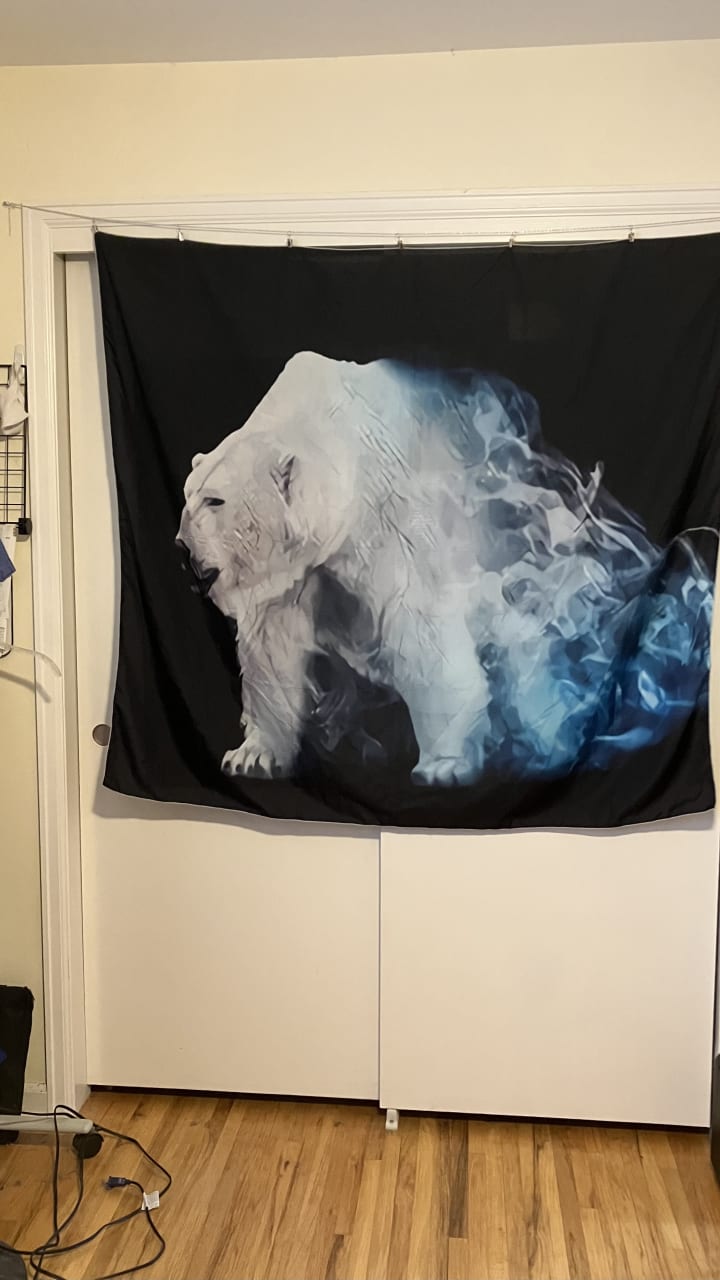Why Polar Bears are White
The Sad Tale Heralding the Lack of Fur Pigmentation in the Ice Bears

Polar bears used to be just as colorful as their non-arctic counterparts. They were powerful, giant, black and brown bears wandering the frozen arctic ice floes.
But then came the worst of the arctic winters in the memory of bear-kind.
The bears - as their kind always had - dug deep into the ice to make their hibernation dens as the worst arctic winter in their history began to move in.

First, it became cold; much colder than it ever had. The ice grew so thick, even the most giant of the arctic animals could no longer break through it. Seals, orca, polar bear; nothing could break the ice apart like they usually could. Seals and orca looked elsewhere for suitable breathing holes and room to swim freely, and the polar bears grew hungrier than usual as a result of their prey traveling on.
But it got worse.
Mothers, underfed and depleted of fat reserves, died, lost their pregnancies, or else stopped producing milk in their deep sleep after birth, and many cubs born to their unconscious mothers slowly starved during hibernation when they would usually fatten up.

Then came the worst of the winds. Ferocious, screaming, and deadly winds; the worst ever experienced by any of the living bears. It was the winds that incurred the dramatic change of the ice bears' furs...
The bears that naturally stirred during their hibernation months found themselves faced with complete white-outs, rendering their sight useless. Relentless, numbing winds swept any scents or sounds away before the bears could even detect them. Those handicaps together made it nigh-impossible to hunt.
Before long, the winds grew so strong - so loud and physical - that many of the bears woke from their winter slumber in abject terror. These were bears - animals meant to sleep such an unforgiving season away! Yet the storm's rage was such that it awoke the population in whole. The few mothers who still had surviving cubs huddled in their dens with their frenzied, crying offspring, while those who had lost theirs trembled alone.

The winds scared the new cubs the worst; they were so new to everything - including the ceaseless roaring driven by nature's unrelenting, biting ferocity...
They couldn't know how different that year's storm was from any before. Or how it would come to shape their species.
It was their terror as they were surrounded by so much wild, hostile chaos that led to their fur turning white.
When the winter storm finally ebbed away, curious bears poked their heads out from their dens to survey the landscape. The snow was stiff, wind-crusted, and deep.

The first bears began digging themselves - and cubs if they had them - out of their cozy, warm dens. It was long, hard work, pushing out the accumulated snow from the den openings. Their long claws scraped the icy den-seals away, and sunlight streamed into their dens for the first time in months.
Cubs blinked at the intrusive beams, crying out as the cold, arctic air rushed in, displacing the warmer air of the dens.
It was then, in the first rays of spring daylight, that the bears saw the changes that had occurred. Cubs, elders - it didn't matter; the bears' furs had all turned solid white!
At first, the elder bears were convinced the pelts would change back to their natural color with time as the stress of the event wore off. But, as the seasons continued, cubs and grown bears continued to grow white pelts after the terrible storm. They'd shed one layer, hoping to see their former hues growing back beneath, only to be disappointed at the creamy white hair replacing the dingy, yellowed layer of the old fur that was shedding.
The stress of living through that winter weighed on them. Their traumas stirred with every subsequent storm. Subconsciously or not, any bear that lived through that storm dug their dens ever more deeper into the frozen landscape. They gorged more voraciously than they ever had each year following, hoping to never suffer such a close brush with starvation again.
In that one winter, they were reminded of the sheer harshness of their arctic home.
The unexpected change in their pelts came with a few new perks, and it could be argued that the white coloration aided the bears - at least when there was snow around. But, this increased their chances of sneaking up on hard-to-find prey just before and after hibernation. Subsequent generations - all too born with creamy, white fur - saw better odds of survival to adulthood. Eating better just before hibernation helped see more mothers bear more healthy cubs; after hibernation, it helped them feed their offspring more easily for a short time. Over time, they grew even larger than their dark-furred cousins, helping them keep warmer than smaller bears.
Eventually, they were practically the only bears capable of living in the arctic fully.
Their home in the arctic started to feel less harsh again, though there isn't a polar bear alive that doesn't tremble in their den when the winter storms peak each year to this day, reminding each and every one of the time the winds scared the very pigmentation from their ancestors' furs.
But, just as they grew used to bearing their new hue...
Temperatures began to warm. The snow and ice they'd come to build their entire way of life off of began melting away.

The large carnivores have since been forced into closer and closer proximity to each other; too many large bears forced to feed off of dwindling prey numbers in smaller and smaller territories. They cannot sustain themselves on such limited resources - when there isn't enough room to sustain so many, the population will dwindle beyond what is already has.
Before, the ice bears feared the biting wind.
Now, they fear the forces changing the landscape of their home so drastically - so quickly. They don't have an iceberg to stand on.
One day, it may not be the myth of how the polar bears turned white that is told...

It'll be the "myth" that the great ice bears ever even existed.
And that is perhaps the most tragic part of this sad, arctic tale.
About the Creator
Megan Baker (Left Vocal in 2023)
A fun spin on her last name, Baker enjoyed creating "Baker's Dozen" lists for various topics! She also wrote candidly about her mental health & a LOT of fiction. Discontinued writing on Vocal in 2023 as Vocal is a fruitless venture.






Comments
Megan Baker (Left Vocal in 2023) is not accepting comments at the moment
Want to show your support? Send them a one-off tip.